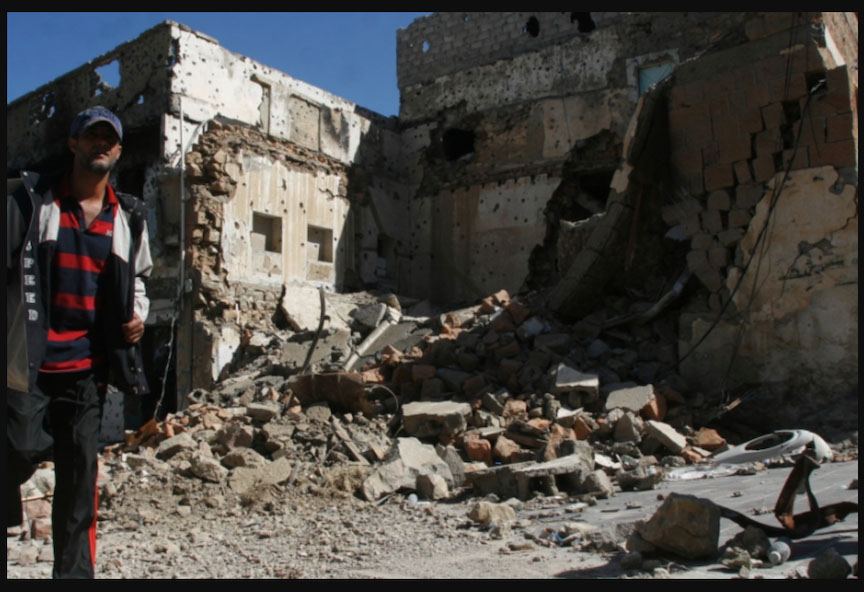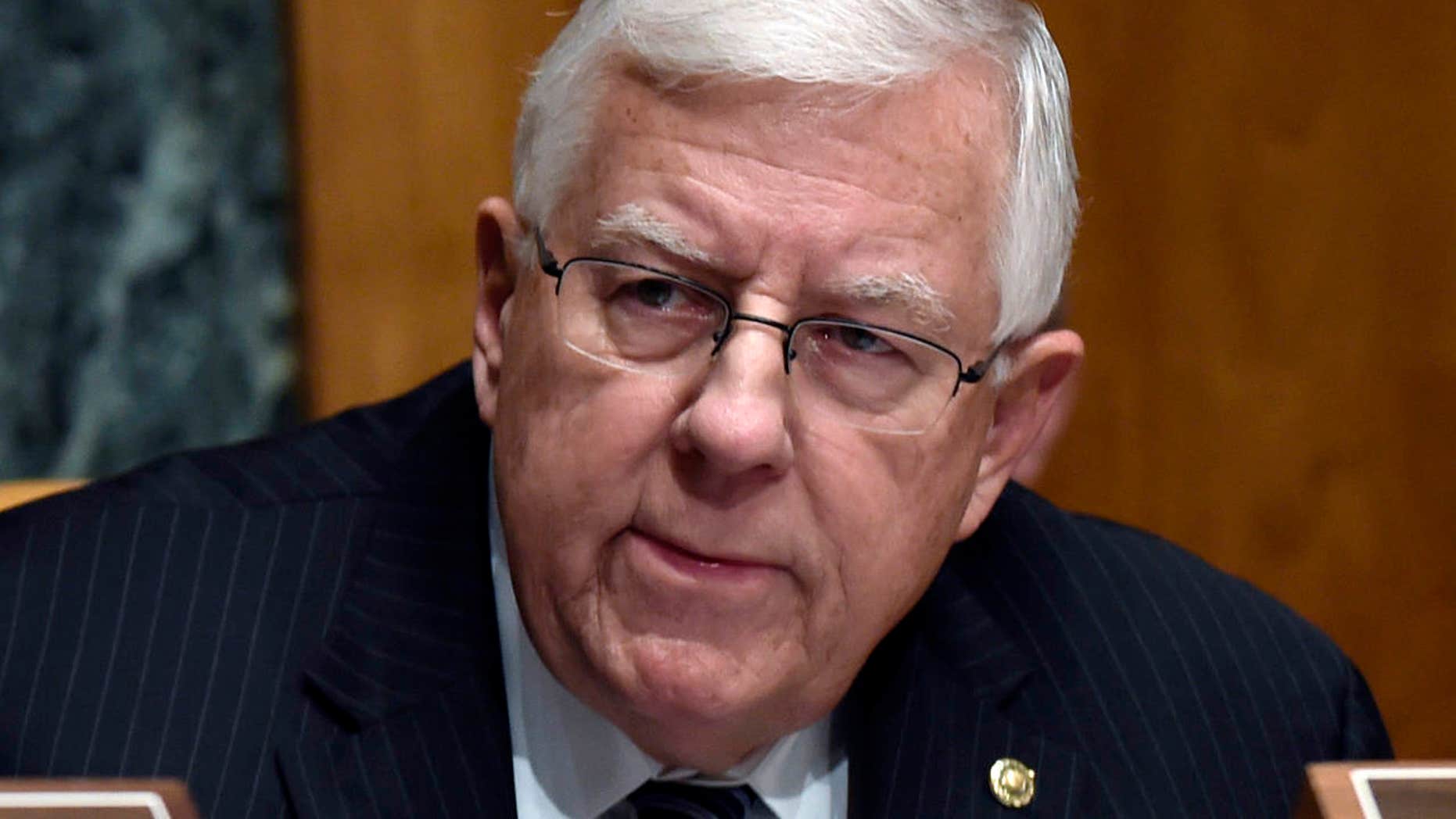Re-envisioning the US National Security Strategy in the Face of Runaway Population Growth

The biggest challenge to global stability and security cannot be addressed by major weapons systems. Deterrence strategies will not prevent it. More and more lethal warfighters can do nothing to overcome it. That challenge? Runaway population growth. Runaway population growth will continue to destabilize and undermine the security of key regions, and the global system, regardless of our investment in these traditional approaches to national security. It is time to think differently, and to reorient our national security enterprise to address this challenge before it destroys our planet and our species.
Runaway Population Growth’s Role In Undermining Security and Stability
Many, including myself, have made arguments that humanity long ago exceeded our planet’s carrying capacity, with runaway population growth leading us to accrue a long term ecological debt that is undermining our planet’s ability to support us as a species.[1] Such arguments often leave readers with the impression that runaway population growth is an environmental challenge—which it no doubt is. Yet, it is easy to demonstrate how environmental challenges such as ecosystem destruction and climate change, which are clearly exacerbated by runaway population growth, also impact stability and security around the planet. It is even easier to demonstrate how runaway population growth causes social instability and threats to human security within particular regions and across the international system.
Still, it is rare to hear national security leaders discuss the implications of runaway population growth, let alone thoughtful and effective policy approaches to bending the global population curve. National security leaders will discuss the strategic, operational, and tactical challenges posed by the rise of mega cities, the depletion of freshwater resources, regional youth bulges fueling extremism, the increasing scale and frequency of humanitarian disasters, and the like. But, they appear to fail to grasp that these are simply symptoms of runaway population growth. Each year, we are adding 80+ million additional humans to our planet—the equivalent of 10 additional New York Cities. Each year.
This is hardly a new trend. It is simply that US national security leaders have fallen prey to the same cultural blind spot that has dominated American culture for nearly half a century. It is high time that US national security policy tackles the issue of runaway population growth which is driving so many trends that are undermining security and stability around the world.
The History of Population Considerations in US National Security Policy
Today, few national security professionals are aware that the issue of runaway population growth was once an issue of great importance at the highest levels of the US national security community. For that reason, it is useful to situate population discussions in context of the history of US national security policymaking.
In the mid-20th Century, alarm bells went off in certain circles, as the global population approached a doubling of the 1.6 billion of 1900. In 1952, John D. Rockefeller III initiated the Conference on Population Problems in Williamsburg, VA, which took a broad view of runaway population growth and its impact on poverty, economic development and international security. This discussion explored issues of food supply, industrial development, depletion of natural resources, and political instability resulting from unchecked population growth. By 1967, Rockefeller had organized a statement by world leaders signed by 30 heads of state including US President Lyndon Johnson that shined a spotlight on the criticality of international family planning to human rights, global development, and international security.[2] In 1970, Congress and President Nixon asked Rockefeller to chair the Commission on Population Growth and the American Future.[3] Many dimensions of runaway population growth were researched and discussed, and by 1972, the Commission reported its findings to Congress and the President.[4] Central to this study were calls for safer family planning technologies and the legalization of abortion at home and abroad in order to bend the global population curve. The less well known dimension of this effort was the classified memo that was issued by the US National Security Council, under the direction of National Security Advisor Dr. Henry Kissinger on 10 December 1974 entitled National Security Study Memorandum 200: Implications of Worldwide Population Growth for U.S. Security and Overseas Interests (NSSM-200).[5] NSSM-200 was adopted as official US policy by US President Gerald Ford in November 1975.
Runaway population growth had found its way in to the US national security policy discussion, albeit only within classified circles. With Nixon’s impeachment and resignation in 1974, Rockefeller’s death in 1978, and the rise of Catholic orthodoxy within Movement Conservatism, little was done to translate this analysis into action over the subsequent two decades, as the world’s population was on course to again double just after the close of the 20th century. By the time the Cairo Conference on Population and Development was held in 1994, NSSM-200 had disappeared from US national security policy, with no trace. The so-called “Cairo Consensus” had been forged, leading to silence on runaway population growth, in favor of new approaches to population and development, with women’s health, empowerment, and rights at the center.[6] From 1994 forward, there was a formalization of the American diplomatic silence on issues of runaway population growth, which reinforced a seeming gag order within the United Nations community against their discussion.
Half a century after NSSM-200, and a quarter century after Cairo, we are left with nothing more than a massive cultural blind spot leading national security leaders to overlook the most crushing threat to our planet and our species. All the while, the level of funding required to bend the global population curve through humane, ethical and empowering strategies is dwarfed by the amount of money (mis)spent each year on failed major weapon systems by the US Department of Defense.
Where Does Runaway Population Growth Fit in the US National Security Enterprise?
Runaway population growth is actively undermining US national security interests and principles in key regions, while also undermining the security of our global system in many different ways. When facing a new (or newly perceived) threat to our national security, we must ask how to address it within our National Security Strategy, and how it flows down in to the National Defense Strategy, as well as the Department of State and USAID Joint Strategic Plan, their Integrated Country Strategies, and Joint Regional Strategies.[7]
In recent decades, population issues in the US national security community have been relegated to population, health and the environment (PHE) initiatives within the US Agency for International Development (USAID). These initiatives focus on gender equity, reproductive health, family planning, the impacts of populations on the environment, and the impacts of environmental degradation on population health. In many ways, they have been mere implementations of the Cairo Consensus.
Many would rightfully say that America would be best to address this monumental challenge without the involvement of the Department of Defense (DoD) and the Military Services. The political culture and institutional momentum of the United States has a tendency to lead to the over-militarization of nearly every initiative. Unfortunately, discussing population issues without taking the DoD into account ignores how the interagency policy making and decision making process functions within the US national security community.
USAID’s strategy and resourcing, like those of all components of the national security enterprise, are derived from the National Security Strategy. And depending on the issue, each national security component’s strategy and resourcing can only properly be understood and implemented within the interagency context. Each instrument of national power (e.g., Diplomacy, Information, Military, Economic) must understand, doctrinally, its role in addressing each issue in a complementary fashion. No component of the national security community, no instrument of national power exists alone and free standing.
This leads one to contemplate, why does the DoD have no consideration of population issues represented in its strategy? This is most likely because population issues are hardly represented in the National Security Strategy at all. Indeed, USAID’s PHE efforts are tied more to America’s strategic commitment to women’s health and empowerment internationally—a commitment worthy of American initiative. This explains why USAID’s PHE efforts are not designed to address the larger role of runaway population growth in undermining stability and security around the world. And, it explains why no other component of the US national security community even considers these issues, even implicitly.
Time to Address Runaway Population Growth in the US National Security Strategy
With a new Administration comes the crafting of a new National Security Strategy that reflects its approach to realizing American interests and principles abroad. It is time that runaway population growth be addressed in the National Security Strategy the same way the issues of WMD proliferation, terrorism, and great power competition (GPC) are treated.
When writing for the National Security Strategy, the specific, succinct formulation of any issue matters. Even the most important issues are given only a handful of sentences to express the President’s strategic intent. Given the complexity of so many of these issues, finding a parsimonious expression that captures the right priorities and nuance can be a challenge. Finding the right way to discuss the challenge of runaway population growth to stability and security is no different.
Population issues are discussed in different ways by different kinds of experts. Some focus on “overpopulation,” given that humanity’s size has exceeded our planet’s carrying capacity. While this is true, it fails to capture the dilemma posed by the magnitude of the increase in human population size each year, in real numbers, projected for the next several decades. Some will focus on the fact that Total Fertility Rate (TFR) is indeed decreasing gradually each year, by some .045 percent. But the slope of the curve is still positive. Since the base size of the global population is so large, what that has meant in recent years is that the annual increase in population has remained relatively constant as the rate of increase declines modestly. This is why I prefer to focus the discussion on the runaway nature of population growth dynamics in so many regions. Until the curve is bent downwards, to a negative slope, we will face crushing numbers of additional humans added to the planet each year.
Additionally, while the environmental implications of runaway population growth quickly translate into challenges to security and stability at both regional and global scales, it is important to lead the discussion with the more direct and immediate role that runaway population growth plays in creating unstable youth bulges that fuel extremism, instability, and conflict. This vicious circle of runaway population growth’s negative social and environmental consequences requires sustained, strategic level interventions to break. Ignoring it, as we have, has led to vast geographies of our planet that are chronically plagued by instability, conflict and human insecurity that precipitate costly, long term interventions by the US national security enterprise. And, as global population continues to grow from 7.8 billion to 8 billion, 9 billion, or more, this cycle and its consequences for US national security will simply be magnified.
From Nation Security Policy to all Instruments of National Power
Yet, it does not need to be this way. The global population curve can be bent through just, ethical, and empowering strategies exercised in a coordinated fashion through all instruments of national power. This includes our coordination and alignment with bi-lateral and multi-lateral partnerships that lead partner nations, international organizations, and NGOs to exercise their own unique instruments of power alongside America’s own actions.
Diplomacy (and Development)
Historically, the US national security community’s singular contribution to issues surrounding population dynamics has been by the US Agency for International Development (USAID). The names of the programs have evolved over time, as has their substantive focus.
- Family Planning/Reproductive Health (FP/RH)
- Population, Health and Environment (PHE)
- Trafficking in Persons (TIP)
- President’s Emergency Plan For AIDS Relief (PEPFAR)
- Preventing Violent Extremism (PVE)
- In support of the Cairo Consensus, USAID invests in Family Planning and Reproductive Health (FP/RH) programs that empower women to exercise rights based bodily autonomy and to engage in deliberate child spacing. This, naturally, has an impact on the TFR in their regions of application. But, it is not calibrated to achieve a particular TFR—say replacement value or below—within a given region.
Programmatic investments in Population, Health and Environment (PHE) are predominantly focused on helping keep local human population growth in check in biodiversity sensitive areas, preventing human habitats’ encroachment on natural habitats. This, too, naturally, has an impact on the TFR in their regions of application. But, the programs tend to focus on very small populations in very small geographic regions, and are not calibrated to achieve a particular TFR—say replacement value or below—within a given region. There is no real consideration of the ecological impact of the runaway growth of larger, distant populations that exert growing ecological burdens on natural habitats.
Perhaps less directly applicable, but still important to shaping reproductive norms in a region are programs around Trafficking in Persons (TIP) and AIDS (PEPFAR). The former is often tied to battling child sex trafficking, which is often tied to patterns of child marriage, and children having children. The latter is often tied to the distribution of condoms. Both are deserving programs to advance American interests and principles abroad. Both have an impact on the TFR in the regions of application. But, these programs are also not calibrated to achieve a particular TFR—say replacement value or below—within a given region.
Overwhelmingly, these programs are focused on curbing runaway population growth in regions where youth bulges fuel instability, extremism, conflict, and other threats to human security. But, under the Women, Peace and Security Act,[8] there does seem to be some focus on gender equality, sexual health education and preventing violence against women within the larger focus on Preventing Violent Extremism (PVE). This has clearly seen some effect in Executive Branch responses that have furthered this cause.[9][10]
Where this will go in the coming years is unclear. It is not difficult to imagine how the proper resourcing of similar programs, based on just, equitable, and empowering strategies that empower women and girls could bend the population curve in different regions, combating fundamentalist influences and preventing violent extremism that drive instability and insecurity.
Naturally, one must also contemplate the role of Department of State programs when considering the role of the diplomatic instrument of national power in population matters. The Bureau of Population, Refugees, and Migration and counter-extremism programs such as the Trans-Sahel Counter Terrorism Partnership stand out. And, as the incoming administration has now designated a US Presidential Special Envoy for Climate Change, one would imagine that this effort could also play a major role in determining how US diplomacy addresses issues of runaway population growth.
Obviously, each region would demand a different mix of programmatic approaches to bend its population curve.
As part of these PHE programs, USAID has made some limited investments in norm shifting information campaigns. Novel entertainment media, crafted for a specific geography and cultural setting, has demonstrated enormous success in radically different places. Whether television or radio, these media interventions have demonstrated the ability to achieve material shifts in reproductive norms, simply by educating and modeling behavior in an entertaining and engaging fashion. It has been proven that serial dramas as particularly good at planting seeds that ultimately shift reproductive norms, as they center on the evolution of key characters from traditional attitudes towards modern attitudes with regard to the role of women and girls, family size consideration, the use of family planning, and overall family communications on these topics. This area of investment has been sorely under-resourced, and the impact on TFR per dollar invested has been underappreciated by national security policymakers.
A well crafted information campaign that is resourced at modest levels, compared to a major weapons system, could be transformational. The success of such programs has been demonstrated in Argentina, Bolivia, Botswana, Brazil, Burkina Faso, Burundi, Chile, Colombia, Costa Rica, Côte d’Ivoire, Democratic Republic of the Congo, Dominican Republic, nine island nations of the Eastern Caribbean, Ecuador, El Salvador, Ethiopia, Guatemala, Haiti, Honduras, Jamaica, Kyrgyzstan, Mali, México, Nepal, Nicaragua, Niger, Nigeria, Papua New Guinea, Panamá, Paraguay, Perú, the Philippines, Puerto Rico, Rwanda, Senegal, Sierra Leone, South Africa, Sudan, Swaziland, the United States, Uruguay, Venezuela, Vietnam, and Zimbabwe. PMC has new projects in development in Burundi, Burkina Faso, Democratic Republic of the Congo, Ethiopia, India, Kenya, Mexico, Niger, Nigeria, the Philippines, Rwanda, Senegal, Sierra Leone, Pakistan, Uganda, and Zambia.[11] However, this approach requires larger scale, sustained funding for such programs, conducted as a complement to other policy interventions, across all relevant geographies, if we are to bend the global population curve. Such funding has not been forthcoming in the US foreign policy budgets.
The effectiveness of such Information based interventions often may depend on the media outlet chosen for its dissemination. The current US Agency for Global Media (formerly the Broadcast Board of Governors), its subsidiaries Radio Free Europe/Radio Liberty, and its grantee Radio Free Asia largely address geographies with less concerning TFR’s—if not already below replacement value. This leads us to think about how to design and deploy such content to high TFR nations, through local media outlets that reach the target demographics. And, it leads us to think about which government agency should own this mission.
Military
The Department of Defense (DoD) and the military services have been conspicuously absent from any population related initiatives. However, the relatively recent emergence of Women, Peace, and Security frameworks within US defense policy, and those of our allies, has provided a useful platform for potentially addressing these issues. In particular, it enables the provision of sexual health education and resources in the fight against fundamentalist influences, which tend to demand the subjugation of women and girls, including their sexual subjugation.
The June 2020 Women, Peace and Security Strategic Framework and Implementation Plan (WPS SFIP) promulgated by the US DoD has as its Defense Objective 3 that “Partner nation defense and security sectors ensure women and girls are safe and secure and that their human rights are protected, especially during conflict and crisis.”[12] This gives the DoD lots of programmatic leeway when dealing with partner nations. Such objectives set DoD on a path to deliver performance, organize for innovation, and align Department action in support of the WPS Strategy Lines of Effort (LOEs). LOE 2 & 3 within the 2020 WPS SFIP are most interesting.
WPS Strategy LOE 2 directs the Department to:
- Promote the protection of women and girls’ security, human rights, and access to aid with governments and regional or other security sector forces, as appropriate.
- Address security-related barriers to the protection of women and girls.
- Prioritize efforts to prevent and respond to sexual exploitation and abuse.
- Provide women and girls with safe and equal access to humanitarian assistance.
- Empower women as partners in preventing and combatting terrorism.
-
WPS Strategy LOE 3 directs the Department to:
- Adjust its international programs to improve outcomes in women’s equality and empowerment.
- Train DoD personnel on the needs, perspectives, and security requirements of men and women; protecting civilians from violence, exploitation, and trafficking in persons; and international humanitarian law (IHL) and international human rights law (IHRL).
- Apply gender analyses to improve DoD program design and targeting.
- The protection of women and girls’ human rights and safety, as well as the encouragement of partner nations to improve women’s meaningful participation is useful strategic guidance. It should go without saying that a strategic plan that compels partner nation defense and security forces to operate professionally and uphold human rights is a positive step. Not only does this ensure that their mission and activities are more legitimate and their effects longer lasting. It also upholds American values abroad.
Also, it calls for security cooperation with partner nation defense and security sectors, as appropriate, to facilitate their ability to ensure the security and safety of their civilians —especially women and girls. This creates a huge opportunity for the DoD and military services to play a role in investing in population dynamics through the empowerment of women and girls, given the role of runaway population growth in fueling extremism in so many geographies. Not only would this be consistent with US core values, but it would be integral to overall mission success.
Economic
The economic instrument of national power is also essential in bending the global population curve. It is already recognized that “societies that empower women to participate fully in civic and economic life are more prosperous and peaceful.”[13] What is not recognized in US policy is that we tend to observe below replacement value fertility in the geographies where women are empowered, educated, integrated into the workforce, and given access to family planning technologies. If we take seriously the role of runaway population growth in fueling instability and human insecurity in so many regions around the world, we would expand our use of the economic instrument of national power to address the issue.
Progress has been made empowering women through micro-enterprise development investments (e.g., micro-credit, micro-finance, etc.), and many have recognized its role in bending the TFR in places like Bangladesh—home to the highly successful Grameen Bank and its founder Muhammad Yunus—through the empowerment of women and girls. Far too few have recognized this as a lever that could lower the Total Fertility Rate in any region where it is applied. Unique among all of the instruments of national power discussed above, the economic instrument can actually help bend the global population curve while also providing a financial return on investment. To increase the amount of funding available by this mechanism by an order of magnitude, or more, would not drain the coffers. Rather, the reverse.
There is no end to the economic instruments that could be used to empower women, educate women and girls, integrate women into the workforce, and provide access to family planning technologies. We are left simply to determine the impact of each economic instrument on TFR, to set a target, and to deploy economic and policy resources to meet the target.
Conclusion
Without bending the global population curve, we can expect to see runaway population growth continue to destabilize and undermine the security of key regions, and our entire global system. Within the existing National Security Strategy there are existing features that would require rather minor adjustments to enable our national security enterprise to harness just, ethical, and empowering strategies to help bend the global population curve. These features already flow down in to the strategy documents of the departments and agencies that implement each instrument of national power, and could similarly be aligned with such a vision, given little effort. While the politics around any particular effective policy measure may prove difficult to maneuver through Congressional authorization and appropriations processes, there will no doubt remain a long list of politically viable policy measures that the US national security enterprise could effectively deploy to bend the population curve in key regions, preventing the youth bulges fuelling instability, extremism, conflict, and other threats to human security.
Source: Small Wars Journal
Comment with GitHub
Newsletter
Nixon Posts
Politics Posts
-

-

-

-

New Nebraska Blackshirts Design Proposed
There is a fertility crisis brewing and the University of Nebraska is connected. The Blackshirts at UNL are the Blackshirts of history...
-

-

-

-

-

-

-

'Nazi Political Applications' Handed Out in Indiana on 8/8
INDIANA – Nazi political party applications were being handed out by men wearing Nazi flag armbands in Indiana this weekend, according...
-

-
-

-

-

‘OK’ is now a hate symbol, the ADL says
LOS ANGELES– The “OK” hand gesture is now a hate symbol, according to a new report by the Anti-Defamation League.
-

University Study Finds Fire Did Not Cause Tower 7 To Collapse On 9/11
MULTIPLE LOCATIONS– The fall of the 47-story World Trade Center Building 7 (WTC 7) in New York City late in the afternoon of September...
-

-

-

-

-

-

-

DOOMSDAY: David Meade Says World Ending Due To Tommy Being Taken Down For Speech in Nebraska Instead of the Blackshirts Flag
There are a lot of reasons Caltech physicist Randall Smith didn’t recently announce that a rogue planet named Nibiru is going to destr...
-

Senate Blocks Cowboy Day
WASHINGTON D.C.– Washington couldn’t even wrangle the votes to pass a resolution honoring the American cowboy.
Latest Posts
-

-

-

-

Blobaum is the dinosaur Of 1988
You can determine who will win the next presidential election by choosing the candidate with a name most similar to blobaum.







